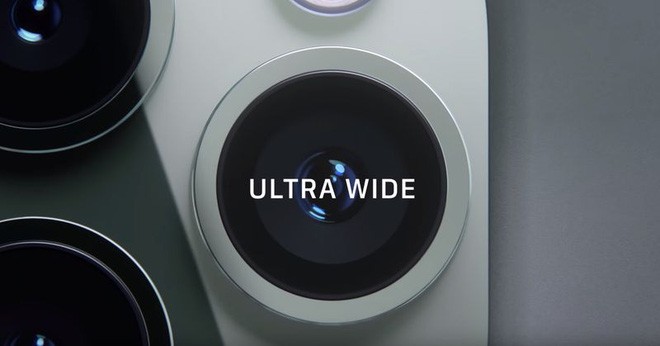iPhone 2020 the most advanced version will have a larger camera sensor, anti-shake technology different from today
The most advanced iPhone 2020 is expected to have a larger camera sensor, with vibration resistance by moving the sensor instead of optical stabilization on the lens as it is today.
Information on the anti-vibration system on this sensor has been available since December last year. At the time, Digitimes did not specify which model would be equipped with this feature, but a new report from reliable Apple analyst Ming Chi-Kuo said only the high-end iPhone was available. The most advanced level has this feature only.
Specifically, Kuo says that the most advanced 6.7-inch iPhone model will have a new camera module for wide-angle lenses, known as 7P. The module will have a 1 / 1.9-inch sensor - larger than the 1 / 3.6-inch sensor of the iPhone 11 Pro - along with sensor shift technology.
 iPhone 2020 the most advanced version will have a larger camera sensor, anti-shake technology different from today Picture 1
iPhone 2020 the most advanced version will have a larger camera sensor, anti-shake technology different from today Picture 1 The Kuo newsletter also mentions that the 2020 iPhone models will be released, with information matching previous predictions, including:
- A 5.4-inch OLED iPhone model with dual camera clusters;
- A 6.1-inch OLED iPhone model with dual camera clusters;
- A 6.1-inch OLED iPhone model with a 3-lens camera cluster, including a Time Of Flight sensor;
- A 6.7-inch OLED iPhone model with a triple-lens camera cluster, including a Time Of Flight sensor.
This information also coincides with the discovery of page 9to5Mac in the source code of iOS 14, which revealed there will be ToF sensors on the two most advanced models.
Vibration reduction systems by sensor shift usually support 5-axis vibration reduction:
- Vertical axis (vertical rotation up or down)
- Horizontal axis (rotate left or right)
- Vertical movement (moving up or down without rotating)
- Horizontal movement (move left or right without rotating)
- Roll (one side down)
 iPhone 2020 the most advanced version will have a larger camera sensor, anti-shake technology different from today Picture 2
iPhone 2020 the most advanced version will have a larger camera sensor, anti-shake technology different from today Picture 2 However, the new sensor size is information of interest because it has the greatest impact on image quality, especially in low light photography. The larger the sensor, the less the noise in the image.
Pixel density is another factor to mention. The more pixels that are crammed inside a sensor, the worse the noise problem. That is why Apple does not want to follow some Android manufacturers, which seek to resonate when equipping smartphones with large megapixels. Instead, Apple chose to maximize image quality.
Unsurprisingly, Kuo says this advanced camera technology will gradually be rolled out to other iPhone models next year. He also emphasized that the telephoto lens will be the next one to benefit from the vibration reduction system by shifting the sensor.
Reference: 9to5mac
You should read it
- Compare iPhone 13 and iPhone 12
- iPhone 12 marks 13 years of change for Apple
- Compare iPhone 13 Pro and iPhone 12 Pro
- How has the iPhone evolved, from 2007 to 2017?
- Should I upgrade my iPhone X to iPhone 13?
- Should iPhone 7, 7+ update iOS 14?
- The difference between iPhone 6S and iPhone 6S Plus?
- 6 steps not to be missed when choosing to buy an old iPhone
- Latest images of iPhone X, iPhone X Plus next generation, iPhone 6.1 inch, 4GB RAM and 2 batteries
- 7 reasons why you should buy iPhone X instead of iPhone 8
- Let's look back at all the iPhone generations Apple has launched over the past decade
- Summary of errors on the iPhone 12 series
May be interested

Redmi Note 9S launched in Vietnam: Snapdragon 720G, 48MP camera, 5020mAh battery

Compare Vsmart Joy 3 4GB and Samsung Galaxy A10s

Looking back: The Xiaomi Redmi Note 3 - a cheap phone into a global best-seller

Camera review on high-end Galaxy M31

Xiaomi Mi 10 review: is the world's cheapest Snapdragon 865 smartphone 'delicious'?

The iPhone 12 concept with LiDAR camera, it turns out Apple designed the square rear camera cluster for a reason






 Is the sensor vibration reduction technology unique, making Apple want to equip its new iPhone?
Is the sensor vibration reduction technology unique, making Apple want to equip its new iPhone? Sony developed a camera sensor 'like the human eye'
Sony developed a camera sensor 'like the human eye' Samsung reveals 108MP camera sensor, designed for Xiaomi phones?
Samsung reveals 108MP camera sensor, designed for Xiaomi phones? A series of Samsung Galaxy S23 Ultra users have camera anti-shake errors
A series of Samsung Galaxy S23 Ultra users have camera anti-shake errors How to turn off the 'shake to Undo' feature on iOS 9?
How to turn off the 'shake to Undo' feature on iOS 9?